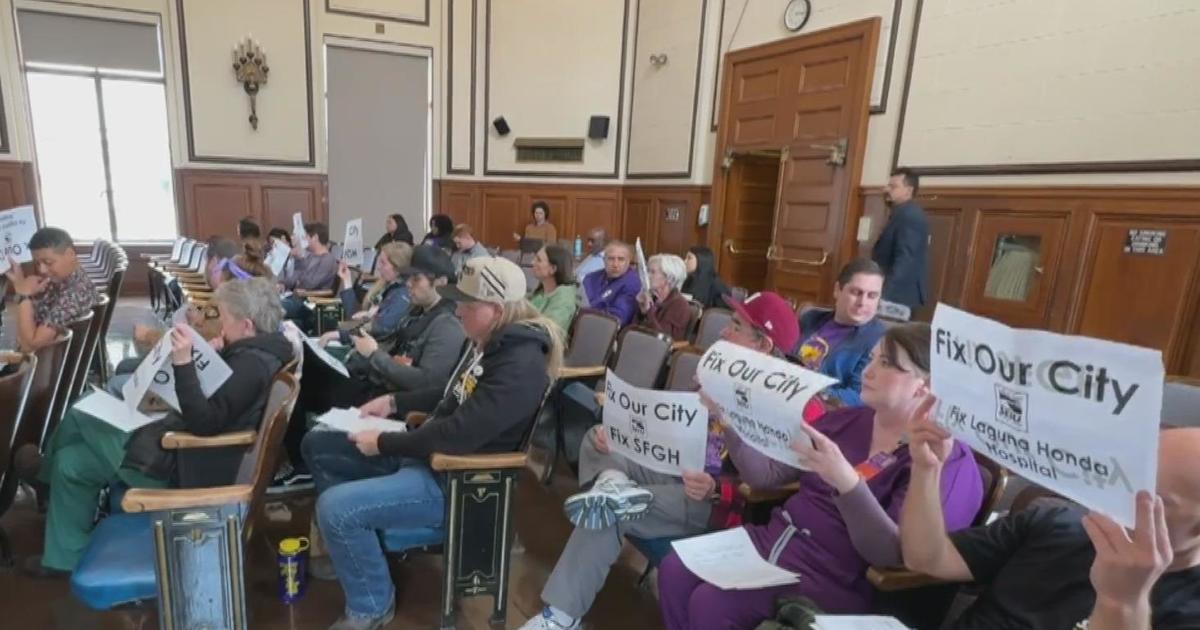Social Housing May Be A Fix For San Francisco's Housing Affordability Crisis
SAN FRANCISCO - Democrats across the country say there's one solution that can help solve the housing affordability crisis, it's what's known as Social Housing.
From inside the dome of the state capital to San Francisco City Hall, 2021 has sparked all kinds of conversations around the concept of Social Housing, but there's one problem, most people don't really know what it is.
"How do I explain this as simply as possible?" State Assembly Member Alex Lee pondered out loud before landing on, "Social Housing is publicly maintained housing developments."
"Basically, Social Housing is housing controlled by the people," San Francisco Supervisor Dean Preston said.
Both Preston and Lee recently introduced legislation that pushes for Social Housing. They also both point to the success of Social Housing in Vienna where 62 percent of the population lives in this kind of housing and Singapore where that number is 82 percent.
"It's something in Europe and Asia they've had for a very long time, we can derive successful models from," Lee said.
It can take many forms, but at its core Social Housing means taking a property off the speculative real estate market so that it can be owned by either the building's tenants as a collective, or by the government.
Supervisor Preston says the voters in San Francisco made Social Housing a reality in November by passing Proposition I.
"What we took on head on in San Francisco is instead of having people fight for the same pot of money to actually grow that pot, have new revenue and dedicate it to Social Housing," Preston said.
Prop I doubles the transfer tax on commercial and residential properties valued over $10 million, so the fee to transfer the title of a property to a new buyer goes into a housing stability fund.
This year, that money will be split between COVID-19 rent relief and a Social Housing fund. By 2023, 100 percent of funds go to Social Housing. San Francisco's Controller estimates this could generate $196 million annually.
To live in Social Housing in San Francisco, tenants on average would have to make less than $71,700 a year or less than 80% of AMI.
"I'm 100 percent in favor of Social Housing," Kristen Panti, an educator living in San Francisco's Mission District said.
Panti is a bit of a unicorn in that she's lived in her building since 1989, she teaches down the street and just had her first second-generation student.
"I've been at my job since '91, my first year I had a kid whose son was in my class 2 years ago," Panti said.
When her landlord decided to sell her building a few years ago, she thought she was going to be evicted.
"I was a wreck," Panti said.
Instead, the Mission Economic Development Agency, or MEDA, a non-profit, stepped in and bought it with help from the city's small sites program. If the city were to own the building instead of a non-profit, that would be an example of Social Housing.
"Something has to be done for teachers for all workers who are low-income people," Panti said.
Many people have a bad association with what used to be called 'The Projects,' a form of public housing in the U.S. Public housing failed because it was largely defunded and extremely segregated.
"A lot of housing was for warehousing communities of color and warehousing the poor and they've been sabotaged doomed to fail," Lee said.
Preston and Lee say public housing isn't doomed to fail, it just has to have a diversity of incomes and enough money to make it work.
"Fund it, for starters right? I mean part of the reason people have a negative association with public housing is that it's underfunded for generations," Preston Said.



